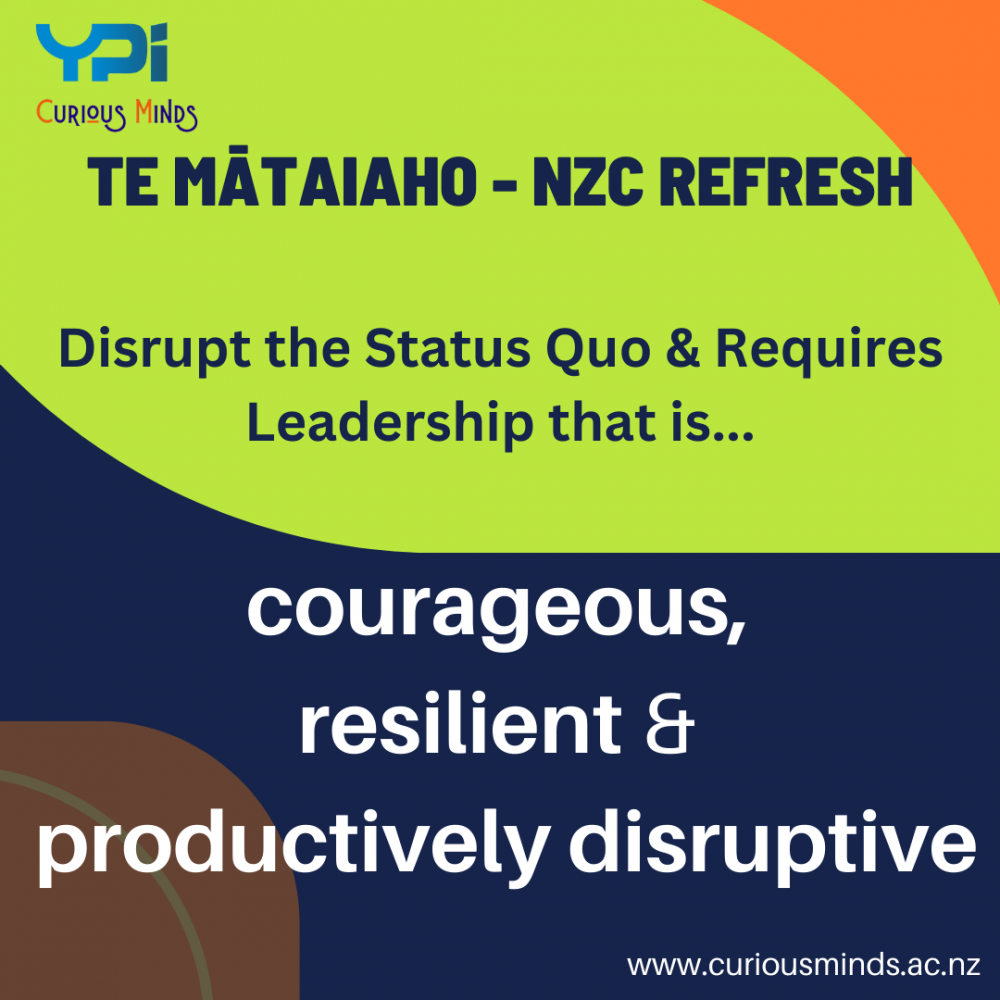Te Mātaiaho - The Refreshed New Zealand Curriculum. Why Now?
Te Mātaiaho - The Refreshed New Zealand Curriculum. Why Now?
If you hadn’t already noticed, there is a lot of media attention surrounding New Zealand’s education system. It’s constant and it’s negative and it points to a narrative that suggests that education in New Zealand is in a state of crisis. And from this media attention, the question of what needs to change frequently arises.
Of course, there are many opinions from many experts on what action needs to be taken. But who is best placed or best qualified to decide what is best for our young people? Who knows best, the aspirations that our young people have? And who better to answer what the aspirations our families have for our young people in New Zealand? The people best placed to answer these questions are those who participate in the lives of our young people; namely their families, their teachers and themselves.
Of course, there are many opinions from different experts on what action needs to be taken for our young people. But, who is best placed or qualified to decide what it is they want and what their aspirations are? The people best placed to answer these questions are those who participate in the lives of our young people; namely their families, their teachers, and themselves.
In 2019 the Ministry of Education published the ‘Leading Local Curriculum Guide’ series to support schools to review their decision making in the key area of curriculum and assessment design. It was also intended to help support schools to strengthen their learning relationships with parents and whānau so that they could become key partners in the learning design and process for their children. In the opinion of the Ministry of Education:
“...A school’s local curriculum is likely to be well-designed when:
- principals and teachers, along with the community, can show what they want their students to learn and how their curriculum is designed to achieve this
- learning is personalised and inclusive; taking into account students' aspirations, interests, identities, languages, and cultures.
https://drive.google.com/file/d/1uvwah1gtEBZs6jgWWZVbnxc3lv3LEWlB/view?usp=sharing
Throughout the curriculum guides it is referenced many times, the need to include all participants in the design of effective and meaningful learning experiences for our young people. The guides themselves are wonderful tools to support schools on this journey of review and change. However, it could be argued that the capacity and will within schools to adhere to these guides and processes has been somewhat slow, despite the language that is used.
Te Mātaiaho - The NZC Refresh goes one step further in my opinion, challenging educational leadership with the need to be accountable, productively disruptive and creating ways to disrupt the status quo. Te Mātaiaho calls for:
“...all ākonga to experience a sense of belonging, to feel valued and to understand that there are many ways to be successful…”
https://drive.google.com/file/d/10yHInYkdFYgpiwWDWFbYG-u__P7Rtfus/view?usp=sharing (p4)
In order to achieve this we need to transform many learning environments throughout New Zealand. This requires leadership willing to embark on a different approach. We can’t continue to do the same thing over and over again and expect different outcomes. Te Mātaiaho provides a clear mandate to do this.
“Transformation within and through education and schooling requires leadership that is courageous, resilient and productively disruptive - leadership by educators who hold themselves accountable to the principles of Te Tiriti, to their communities of interest and to those ākonga who have historically been left behind or situated on the margins”
https://drive.google.com/file/d/10yHInYkdFYgpiwWDWFbYG-u__P7Rtfus/view?usp=sharing (p5)
Te Mātaiaho goes as far as suggesting that school leaders encourage
“...Kaiako to be courageous in designing rich coherent pathways and local curriculum that disrupt the status quo and ongoing inequities for many ākonga”
https://drive.google.com/file/d/10yHInYkdFYgpiwWDWFbYG-u__P7Rtfus/view?usp=sharing (p12)
So despite what we may be seeing in the media, I feel a growing optimism that we have the tools to correct what we are continually told is a growing crisis in New Zealand's education system. I would like to leave the readers with a final thought, that it is not just New Zealand that is facing issues in its education system, it’s happening all over the world. In a recent study titled “The Time is Now” I was comforted by an statement in the study which stated:
“Out of crisis often comes an opportunity to examine where we are, where we want to be, what’s holding us back and changes needed for success.”
https://www.ncsl.org/research/education/the-time-is-now.aspx
I felt reassured by this, because with the Leading Curriculum Guide Series, we have the tools, and with Te Mātaiaho, we have the mandate to design the changes needed for success for schools and young people across Aotearoa New Zealand.
IF NOT NOW, WHEN?
